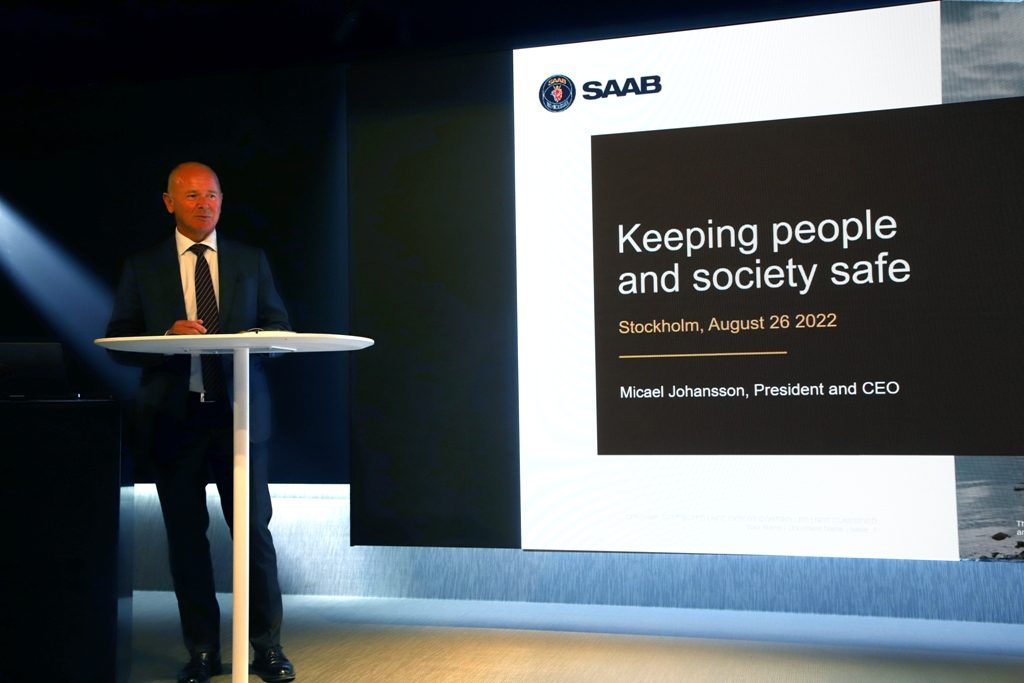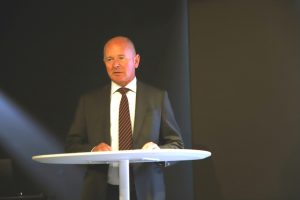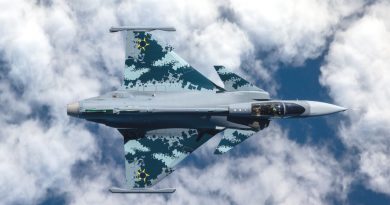
Saab on the path to become a multi-domestic, high-tech offering company, says CEO
On Saturday August 27th the Swedish Air Force organised the first air show after a long interval due to the pandemic. Saab took profit of the event, which was held on the F 16 base in Uppsala home of the Uppland Wing, to make a point on its aeronautics activities, in the light of the many changing that are affecting Sweden in particular, with the decision to become part of the Atlantic Alliance, and the world in general, with the war in Ukraine and tensions in various other areas.
The briefing session was opened by Micael Johansson, Saab’s president and Chief Executive Officer, who analysed the situation in the light of recent events, the trend to foster national defence capabilities in many western countries being obviously one of the points of reflection.
“We are in a great position to take market shares. We see that spending started to increase but in many countries this process is not so quick, we do not see immediate contracts coming through.” Although Saab order input this year is considerable, the increase is not what many would expect, according to the company CEO, who underlines that there is still much to do in many countries to streamline the acquisition process in order to accelerate it. Unclear processes and national protectionism are among the issues that hamper the optimal use of common funding. “That said, the increase in the defence expenditures due to the tragic war in Ukraine is a terrific opportunity that has not be seen for very long time,” he underlines. Looking at numbers, in the first half of 2022 Saab orders totalled 1,631 million Euro, a 76% increase over 2021, while sales were worth 955 million Euro (+0.4%), both EBITDA and EBIT also growing compared to the same period last year. “Due to what I stated before, we have selected to maintain our 5% growth rate estimate over time, but we are ready to review this should things will speed up.”
Continuous investment in new technologies is a must for the company CEO, autonomy, sensor systems, cyber, defence cloud offering, Artificial Intelligence, information fusion and information management being some of the key areas.
Looking at the problems in the supply chain, Mr. Johansson underlines that some sort of trade off will have to be made between low cost and resilience. Saab is trying to regionalise its supply chain, but this takes time as in certain domains new providers have to be certified, which is a lengthy process.
Sweden has made the decision to join NATO and the process is well launched. “It is a lot of work for a nation like Sweden to step into NATO, and this is true on the political side, on the Armed Forces one and obviously also for industry.” Sweden will have to put the right people into the Alliance structures, which will open up opportunities, the company CEO underlining that the country long term credibility, as well as that of the Swedish defence industry, will become more evident. According to Mr. Johansson this will outmatch the advantages of being a non-aligned country, something that played positively in a limited number of cases in the past years.
NATO membership should also allow Saab to work in more sensitive areas such as sensors, electronic warfare, command and control, on a peer level with the companies from European nations that have been part of the Atlantic Alliance since a long time.
“I also hope that Nordic countries will take commitment in the region not only at national but at the Alliance level, for example in areas such as air defence and underwater, and this would mean quite a lot to us as these are part of the company capabilities,” the Saab CEO underlines.
One of the emerging problems is to adapt the defence industries’ output rate to the need of a wartime situation. “One of the most important steps we are currently taking is the heavy investment in production capacity. For example in the ground combat and missile sector in one year time we doubled the output from our main facilities in the Karlskoga area, and we are now going to double it again by investing in new lines and in new facilities, hiring new people, and also generating some redundancies creating some production capability in other countries like in the United States and the United Kingdom. There is a tremendous demand, but we are in a good position because luckily we started much earlier to improve our capabilities,” Mr. Johansson explains. The Ukraine conflict has increased the interest in many areas of the Saab portfolio, “and we are now well prepared to meet the opportunities we see ahead of us.”
Beside the Gripen E, which is being delivered, and the recent contract filed by Sweden for two Globaleye C2 and surveillance aircraft, Sweden and Saab are expected to be part of the FCAS/Typhoon programme. “We are on the margin of the Future Combat Air System programme with the UK, Italy and Japan, but our participation is not as intense as we thought at the beginning. We are not out of the programme but we are marginal in terms of spending, there has been a sort of hibernation for a while, looking at how UK, Italy and Japan will set up the programme.” EDR On-Line understood that Sweden is waiting to see the concept, the systems of systems, the core platform, the adjuncts, to be further developed, as well as to understand what will be required from the other countries, before taking a final decision. “And we as Saab are fully connected to that, as we cannot participate without the support of Sweden,” Mr. Johansson says.
While continuing to work with the partners in the FCAS, Saab is also carrying on studies, evaluations and demonstrations on a national level together with Swedish Air Force and Swedish defence forces. “Of course we are continuing ourselves to take the next steps beyond the Gripen E, in terms of autonomous platforms collaborating with manned platforms, those studies having started from a Swedish-centric perspective.”
However Saab is not only aircraft. “Coming to command and control, sensors and weapon systems, even if Sweden is a very important customer for us in these areas, those are extremely export-oriented, and we use these areas to set-up our so-called multi-domestic strategy. We aim at having hubs in the United States, the United Kingdom, Germany, Australia and potentially Brazil,” Mr. Johansson stated. This means not only having commercial hubs but also R&D and eventually production, to diversify and to become part of those countries defence capabilities. Transfer of technology is also a key issue, and Saab demonstrated it in Brazil with the Gripen E, but according to the company CEO this is done also in a more comprehensive way in other core areas.
The Saab CEO underlines that a greater support from the Swedish state in the export campaigns would be most welcome when confronting with much bigger players coming from the United States and France, but that said he remains optimistic: “I still think that we have very good opportunities to capture a substantial portion of the market, and I am talking of hundreds of aircraft,” he concludes.
In summary, Micael Johansson sees Saab transforming from the current Swedish-oriented contender on a global industry market into a multi-domestic, high-tech offering, digitalised company that at the 2030 horizon will double its turnover and increase profitability.
Photos courtesy Saab and P. Valpolini



